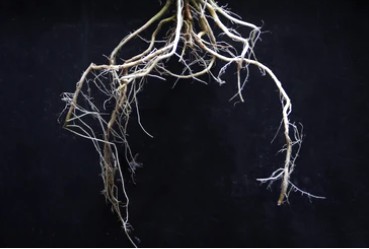Characterization of Plant Root System
In modern agriculture, crop growth and yield are affected by various factors, among which the health status of the root system is crucial. To deeply understand the physiological and ecological functions of crop roots, Lifeasible provides advanced and reliable technical support and effective solutions for plant root characterization, especially our introduced non-invasive observation and monitoring system, as an innovative root research tool, which can help agricultural scientists and growers to make more informed decisions.
Importance of Plant Root System Characterization
Genetic mapping is a tool for presenting plant genetic information that reflects the genetic differences between plant varieties. Through these maps, we can help researchers and agricultural technicians achieve the following purposes.
- Identify varieties. Distinguish between different varieties of fruit trees to ensure purity of cultivation.
- Parentage identification. Analyze the parentage of plants and provide a scientific basis for breeding.
- Variety protection. Protect newly developed fruit tree varieties and prevent illegal copying and planting.

Our Service for Plant Root System Characterization
We utilize advanced techniques and instrumentation in the characterization of plant roots, replacing traditional methods of plant root observation that are time-consuming and can cause damage to the root system and even death of the plant. Below are some of the techniques we use most often.
Non-invasive root observation and monitoring system
We have a non-invasive root observation and monitoring system for analyzing root morphology, including root length, diameter, surface area, volume, and other indicators. Using this non-invasive observation method, we can help agricultural scientists and growers make more informed decisions by monitoring plant roots.
Gel culture method
Transparent gel is a non-soil substrate that allows the root system to grow in a visible environment. This makes it ideal for studying the morphology and conformation of microroots and the root systems of seedlings.
Transparent root chamber method
For root investigations using soil as the substrate, we use root chambers with one or more transparent planes where plants are cultivated, and the root system is visible through the transparent walls.
Penetrating ray imaging method
We provide innovative in situ plant root research techniques by using X-ray tomography and magnetic resonance imaging for non-destructive root studies.
Three-dimensional observation of root system
We utilize non-destructive observation techniques that allow us to achieve an all-encompassing three-dimensional view of the root system, including techniques such as ground-penetrating radar (GPR) and X-ray computed tomography (XCT). We need to be aware of the effects of factors such as soil moisture and texture when using these techniques.
Processes for Characterizing Plant Root Systems Using Non-Invasive Systems
- Equipment installation. We use state-of-the-art equipment and techniques to install characterization instruments to ensure they are stable and capable of long-term monitoring.
- Data collection. Images and data are collected from plant roots using our specific systems, including root growth rate, distribution, and morphology.
- Data analysis. Using specialized data analysis software, we transform the collected data into useful information to help understand the dynamics of the root system.
- Strategic recommendations. Based on the results of our analysis, we provide targeted planting and management recommendations to optimize crop-growing conditions and improve yields.
Application of Plant Root System Characterization
- Crop growth studies. Can be used to study the adaptation of crop root systems to soil conditions.
- Agricultural management decision-making. Optimize agricultural management measures such as irrigation and fertilization based on root data.
- Environmental stress assessment. Used to assess the impact of different environmental factors on root growth. Capturing the root response of plants in the face of environmental stresses such as drought and salinization provides a scientific basis for addressing climate change and soil degradation.
Why choose us?
- We can effectively measure root morphology in root characterization and assess root physiological status, chemical composition, growth and environmental adaptation.
- We are equipped with professional analytical software and systems that enable us to perform root phenotyping and provide in-depth data analysis and reporting.
- We can apply our services to various environments, including laboratories, greenhouses, and fields, to meet research needs under different conditions.
- We can provide customized root characterization solutions, including specific measurement parameters and analysis methods, according to the characteristics and needs of customer projects.
 Fig.2 Advantages of our services. (Lifeasible)
Fig.2 Advantages of our services. (Lifeasible)
Lifeasible provides advanced root characterization services for your plant research, helping you gain an in-depth and comprehensive understanding of the plant root system and solid data to support your agricultural research. If you are interested, please feel free to contact us.
For research or industrial raw materials, not for personal medical use!

 Fig.2 Advantages of our services. (Lifeasible)
Fig.2 Advantages of our services. (Lifeasible)